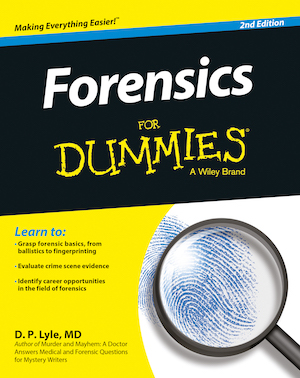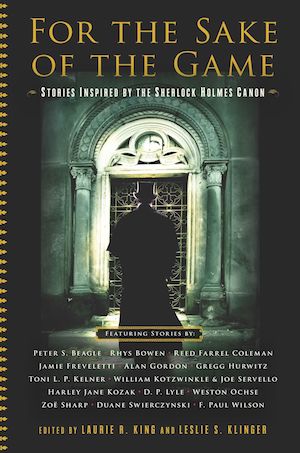The History of Fingerprinting
The evolution of fingerprints as a method of identification was a long, slow journey of nearly 3000 years. The milestones in this process include:
Prehistory: Early pot makers “signed” their works with an impressed finger or thumbprint, which identified the work as their own.
1000 BC: The Chinese used fingerprints to “sign” legal documents and criminal confessions. It is unclear whether this was a ceremonial practice or a true method of personal identity
Ca. 1000: Quintilian, a Roman attorney, exonerated a blind man accused of murdering his own mother by showing that a bloody palm print found at the scene had been placed by someone else in an attempt to frame the unfortunate man.
1685: Marcello Malpighi, professor of anatomy at the University of Bologne, was the first to recognize fingerprint patterns when he wrote of the “varying ridges and patterns” he saw on human fingertips. He was the first to use the terms “loops” and “whorls” in describing these patterns.

1823: Johannes Purkinje of Breslau University devised the first system for classifying fingerprints. He listed nine basic patterns and laid down rules for their individual classification. These rules and patterns are the basis for today’s classification systems.
1858: To prevent fraud in contracts and pension distributions, Sir William Herschel, an English civil servant stationed in Bengal, India, required that the natives sign contracts with a hand imprint. He is perhaps the first European to recognize the individuality of such prints. He also kept a record of his own prints and showed that they did not change over a 50-year period, a discovery that was of paramount importance to the development of fingerprints as a forensic tool.
1880: Henry Faulds, a physician and surgeon at Taukiji Hospital in Tokyo, Japan, wrote that fingerprinting could be used for personal identification and suggested that it might be useful for identifying criminals. He also recognized that latent (invisible) prints could be exposed by dusting them with powder and used this method to exonerate a man accused of thievery. The man was arrested and his prints were checked against one the thief had left on a window, but they didn’t match. Days later the real thief was found, his prints matched, and he confessed.
1883: Even Mark Twain understood the discriminatory power of fingerprints and used the technique in his books, Life on the Mississippi and Puddin’ Head Wilson.
1892: Sir Francis Galton published his classic textbook, Finger Prints, the first book on the subject. He described three patterns within the prints that he called loops, arches, and whorls. More importantly, he gave convincing evidence that no two prints were identical.
1892: Juan Vucetich, a police official in La Plata, Argentina became convinced that fingerprints could be used to identify criminals and devised a classification system that is still in use in most of South America. He published a book on the subject in 1894.
1892: Argentina became the first country to use of fingerprints to solve a crime. On June 18, 1892, the illegitimate children of Francesca Rojas were murdered and she accused a man named Velasquez. Alvarez, a police investigator who trained under Juan Vucetich, discovered that Rojas had a lover who had previously stated that he would marry her if she did not have children. A bloody fingerprint found at the scene matched Rojas’ right thumb and she confessed.
1897: Herman Welcker compared his own prints taken in 1897 with ones he had taken 41 years earlier in 1856 and found they were unchanged, thus supporting the findings of William Herschel.
1899: Sir Edward Henry devised a classification system based on five types of prints. His system is the basis for those used in Britain and America today.
1901: Edward Richard Henry was appointed head of Scotland Yard and adopted a fingerprint identification system in place of anthropometry.
1902: Burglar Harry Jackson became the first person in England to be convicted by fingerprint evidence when he left his thumbprint at the scene of his crime.
1903: The New York State Prison system instituted the first systematic use of fingerprints for criminal identification in the United States.
1910: Thomas Jennings became the first United States citizen convicted of a crime by use of fingerprints. Tried for murder in Chicago, Jennings was convicted and the verdict was upheld on appeal, making his case a landmark in the use of fingerprint evidence in court.
Near the end of the 19th century, fingerprints weren’t the only identification method being studied. The field of anthropometry vied with fingerprints to become the standard method for identification. Until an odd and landmark confrontation between the two methods settled the issue. I’ll discuss that in Part 2 of this three-part series.


























Jim Warren
October 3, 2009 at 10:52 am
Doug,
These days, which is more convincing to a “typical” jury, fingerprints, or DNA?
Jim Warren
LikeLike
D.P. Lyle, MD
October 4, 2009 at 9:04 am
Of course juries vary and most would believe that both fingerprints and DNA were absolute in identifying someone, but DNA tends to be seen as more sexy and technical, so given the two I would think a prosecutor would prefer DNA.
LikeLike
kissme100
November 11, 2009 at 1:48 pm
of course this is intresting but if you cut the skin off your finger wouldnt your finger print not be there
LikeLike
D.P. Lyle, MD
November 11, 2009 at 3:37 pm
Fingerprints always grow back unless the tissue removed was very deep—so deep that skin grafting would be required to repair it. Also the cuts could leave scars that would alter the pattern but these in and of themselves add individual characteristics that could be matched to any print left after the damage was done. John Dillinger attempted to remove his prints wasn’t successful.
LikeLike
J.L Healy
February 18, 2010 at 5:06 pm
As a student of Criminal Justice and having the skin sheared from a thumb in the past, I must answer this question so that others may not find out the “hard way.” Yes, your fingerprints will grow back if the rest of your thumb is not removed also.
My thumb has been sheared fron the first knuckle to the tip of my thumb. Though scarred, I have a thumb print identical to the previous.
LikeLike
vilma reyes
May 20, 2013 at 11:50 am
My sister died after falling ill for just 1 week,.early stages started with forgetfulness,then progressed to depression like symptoms,..until she succumbed to nausea ,vomiting,siezures,she was given carbamazepine and an anti psychotic medicine(manic depressive pill),..she was like a zombie according to mother,..then she had 1 final seizure and she never came out of it,..she was intubated for 24 hrs or so,..then they decided to remoove the life saving gadget,..they said she had brain hemorrhage,..she was only 41 and a very healthy person all of her 41 years in life,..could it be foulplay?
LikeLike
D.P. Lyle, MD
May 20, 2013 at 5:01 pm
I never comment on such real life situations. This should be discussed with the treating physicians.
LikeLike
Dr. Georg Ramsauer
June 2, 2018 at 9:52 am
I am a private investigator and I am very interested in crime history
LikeLiked by 1 person